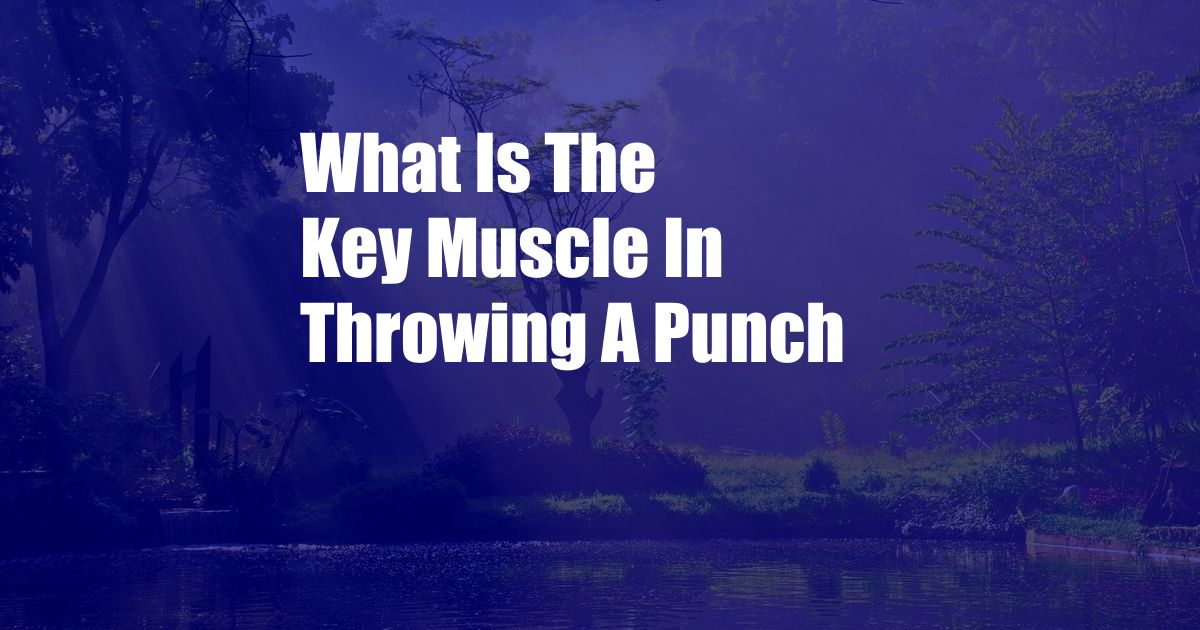
What is the Key Muscle in Throwing a Punch?
We’ve all seen the videos of boxers and martial artists throwing punches with incredible power and precision. But what’s the secret to their success? What’s the key muscle group that generates all that force?
In this blog post, we’ll take a deep dive into the anatomy of a punch and identify the key muscle groups involved. We’ll also discuss the latest trends and developments in punching techniques, and share tips and expert advice for improving your own punching power.
The Anatomy of a Punch
To understand the key muscle groups involved in throwing a punch, we need to first take a look at the anatomy of the punch itself. A punch is a ballistic movement that involves the coordinated action of multiple muscle groups throughout the body. The movement begins with the feet, which provide a stable base of support. The legs then generate power by extending the hips and knees. This power is transferred through the torso and arms, and is ultimately released through the hand.
The key muscle groups involved in throwing a punch include:
- The legs: The legs provide the power for the punch. The quadriceps and hamstrings extend the hips and knees, generating the initial force for the punch.
- The core: The core muscles stabilize the body and transfer power from the legs to the arms. The abdominal muscles and obliques contract to keep the torso upright and prevent it from rotating during the punch.
- The shoulders: The shoulders rotate and extend the arms, generating the power for the punch. The deltoids and trapezius muscles are the primary muscles involved in shoulder movement.
- The arms: The arms extend and rotate the hand, delivering the final blow. The biceps and triceps muscles are the primary muscles involved in arm movement.
- The hand: The hand delivers the final blow. The flexor and extensor muscles of the hand control the movement of the fingers and wrist.
The Key Muscle Group
While all of the muscle groups listed above are involved in throwing a punch, there is one muscle group that is particularly important: the rotator cuff muscles. The rotator cuff muscles are a group of four muscles that surround the shoulder joint. They work together to stabilize the shoulder and rotate the arm.
The rotator cuff muscles are essential for generating power in a punch. They help to stabilize the shoulder joint and prevent it from dislocating during the punch. They also help to rotate the arm, which is necessary for delivering a powerful blow.
Tips for Improving Your Punching Power
If you want to improve your punching power, there are a few things you can do.
- Strengthen your rotator cuff muscles: The rotator cuff muscles are the key muscle group for punching power. You can strengthen them by doing exercises such as shoulder presses, lateral raises, and reverse flyes.
- Improve your technique: Proper punching technique is essential for generating power. Make sure that you are using your legs, core, and shoulders to generate power, and that you are delivering the punch with a straight arm.
- Practice regularly: The best way to improve your punching power is to practice regularly. The more you practice, the stronger your muscles will become and the better your technique will become.
Conclusion
The key muscle group in throwing a punch is the rotator cuff muscles. By strengthening your rotator cuff muscles and improving your punching technique, you can improve your punching power. With enough practice, you’ll be able to throw punches with incredible force and precision.
Are you interested in learning more about punching techniques? If so, be sure to check out the resources below.
FAQ
Q: What are the rotator cuff muscles?
A: The rotator cuff muscles are a group of four muscles that surround the shoulder joint. They work together to stabilize the shoulder and rotate the arm.
Q: Why are the rotator cuff muscles important for punching power?
A: The rotator cuff muscles help to stabilize the shoulder joint and prevent it from dislocating during the punch. They also help to rotate the arm, which is necessary for delivering a powerful blow.
Q: How can I strengthen my rotator cuff muscles?
A: You can strengthen your rotator cuff muscles by doing exercises such as shoulder presses, lateral raises, and reverse flyes.
Q: How can I improve my punching technique?
A: Proper punching technique is essential for generating power. Make sure that you are using your legs, core, and shoulders to generate power, and that you are delivering the punch with a straight arm.
Q: How can I practice punching?
A: The best way to practice punching is to find a qualified instructor and attend a boxing or martial arts class. You can also practice punching on your own by using a heavy bag or a partner.